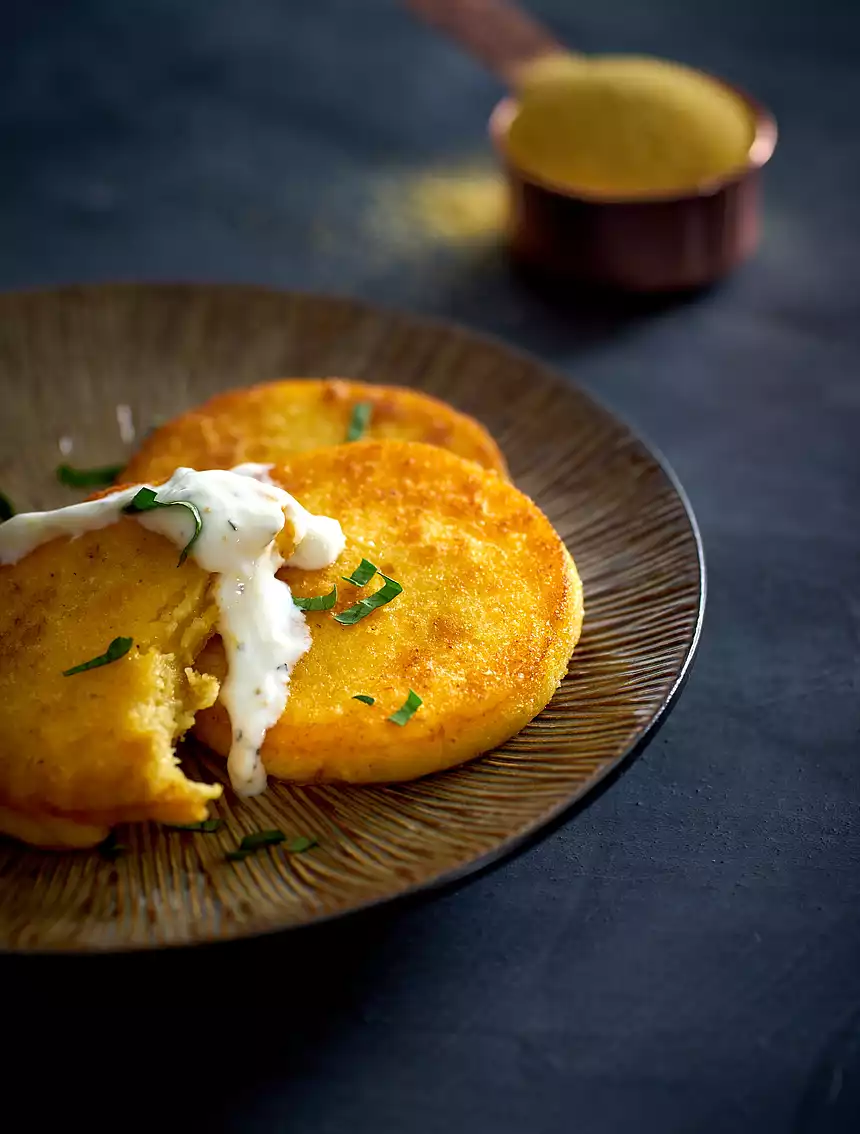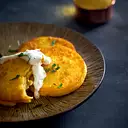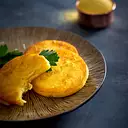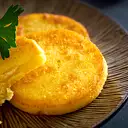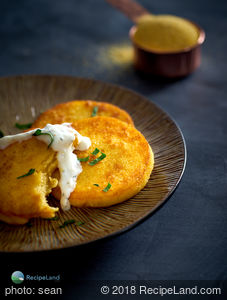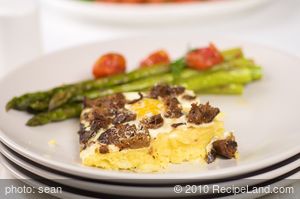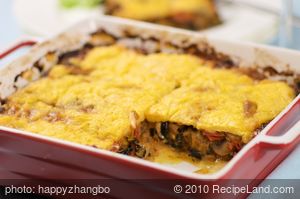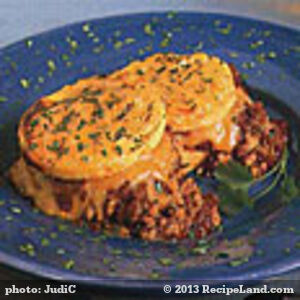How to make polenta; an easy recipe for polenta. Vegetarian, gluten-free and low-carb.
YIELD
8 servingsPREP
5 minCOOK
10 minREADY
15 minThis polenta recipe features water ratios that allow the polenta to set firm, typically rolled into a cylinder and then stored in the refrigerator until needed.
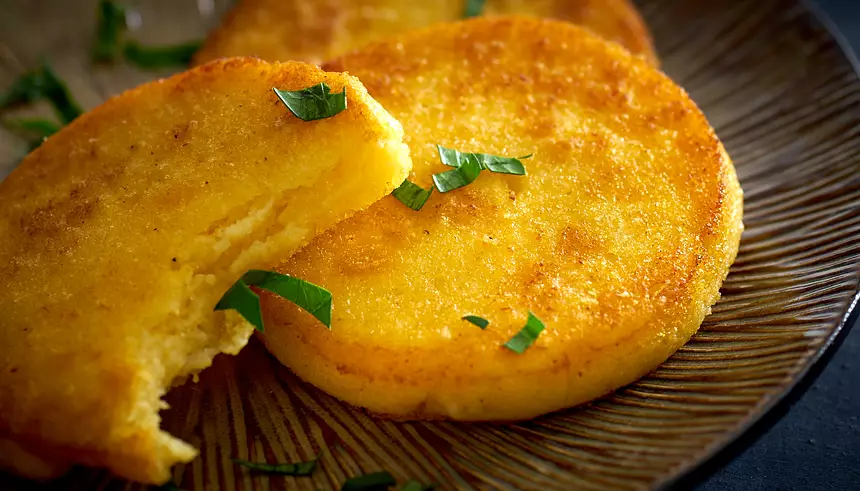
When ready to serve, cut off disks or cakes and fry them in a small amount of oil until crispy, then top the cakes with cheese and fresh veggies or a quick mustard yogurt sauce as in Golden Polenta & Egg with Mustard Sauce.
Can polenta be frozen?
Polenta can indeed be frozen! Freezing polenta is a great way to save time and make meal prep easier. Here’s how to do it:
Cook your polenta according to your favorite recipe. Spread the cooked polenta onto a parchment-lined baking sheet in a thin layer. Allow the polenta to cool completely, then cut it into your desired shapes (squares, triangles, or circles work well). Wrap the polenta pieces in plastic wrap or aluminum foil and place them in a freezer-safe bag or container. Label the bag or container with the date and contents, and store it in the freezer for up to 3 months.
When you’re ready to enjoy your frozen polenta, remove the desired amount from the freezer and reheat it in the oven, stovetop, or microwave. You can serve it with your favorite sauce, as a side dish, or even as a base for a delicious casserole. Just remember to thaw the polenta in the refrigerator before reheating it.
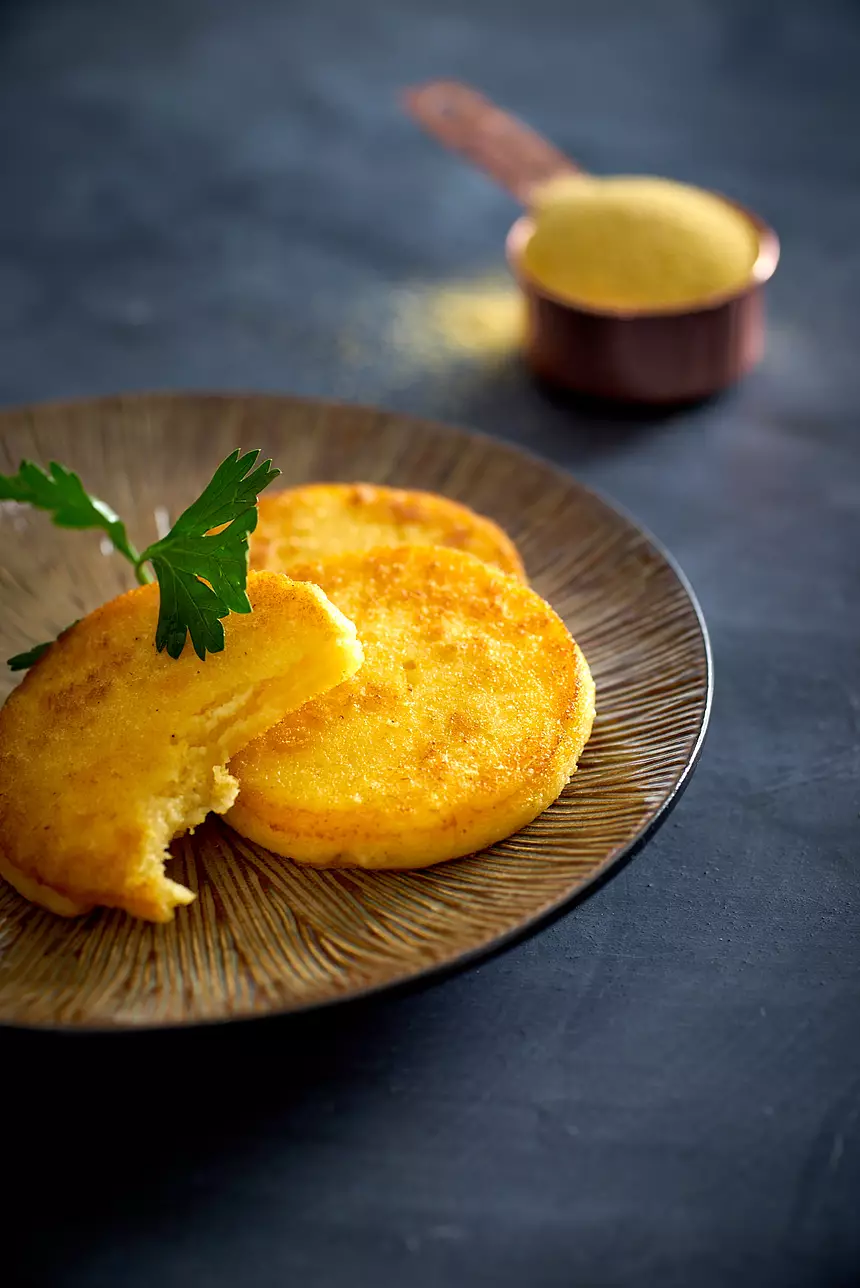
Polenta water ratio
Polenta is a tasty and adaptable dish; the proper water ratio is key to achieving that perfect creamy consistency.
The ideal ratio is 5:1, that is, five parts water to one part cornmeal by volume. However, if you’re feeling adventurous, experiment with a 4:1 ratio for a thicker polenta. Remember, the more water you add, the creamier and smoother your polenta will be. So grab your apron and get ready to cook up a storm!
Polenta vs Grits
Polenta is often compared to grits and sometimes confused with one another, but they are different.
Both are made from ground corn, but the type of corn and the preparation methods can differ.
Polenta is made from yellow or white flint corn, whereas grits are made from dent corn.
Polenta is usually cooked with water or broth to create a creamy, porridge-like consistency, while grits are commonly boiled in water or milk and served as a side dish.
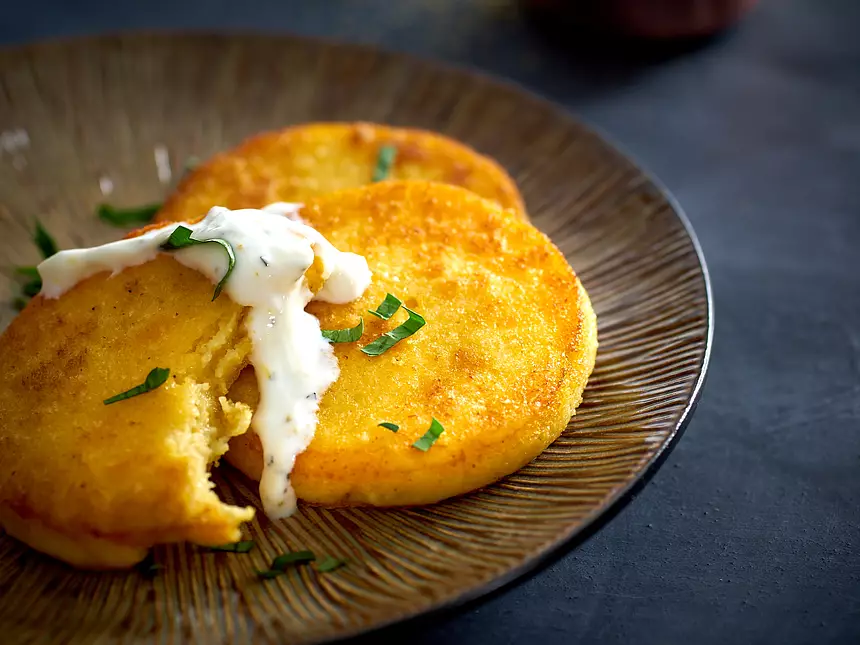
The taste and texture of the two dishes can also vary, with polenta having a coarser texture and a more complex, slightly sweet flavor, while grits are typically smoother and have a milder taste.
Ingredients
Directions
Bring the water to the boil, in a 3 quart(litre) pot (or larger), over high heat. Add the salt and whisk in the cornmeal, pouring it in a slow, steady stream, while whisking rapidly to ensure that lumps do not form.
Lower the heat, to medium and cook for about 10 minutes, while continuing to stir to prevent scorching. The mixture will be quite thick.
Alternatively, you can cook the polenta using a double-boiler heald over simmering water for 45 minutes, stirring occasionally.
Soft polenta
If you are planning on serving the polenta soft, keep warm over low heat (or in a double-boiler) until ready to serve. You may wish to thin as needed with extra water.
Firm polenta
For firm polenta, transfer into a pan or mold and allow to cool. A straight-sided food grade bottle with the top cut off can be used to make a “tube” of polenta. Once chilled, you can slice off discs or rounds for a quick and easy crispy side.
Broil, grill or fry by brushing both sides of the polenta disc or square with olive oil and cook until crispy and lightly browned.
The polenta slices can also be fried in butter or other oil, either until lightly colored or until crisp and can be used as layers in a casserole.
Is polenta healthy?
If you’re on a gluten-free diet, polenta is a winner. Polenta is made from ground cornmeal. Polenta contains beta-carotene and has slightly fewer calories than other wheat-based carbs.
Polenta is gluten-free and can easily replace wheat-based sides. It’s a low-carb food that’s rich in vitamin A and C.
Polenta is extremely versatile. It can be served soft or hard, hot or cold and goes with breakfast, lunch, and dinner.
Comments
